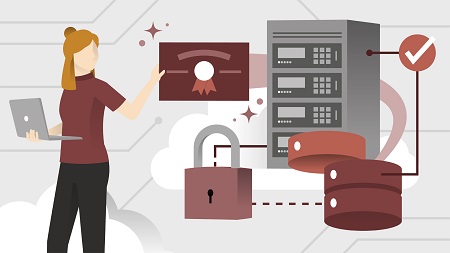
English | MP4 | AVC 1280×720 | AAC 48KHz 2ch | 1h 44m | 273 MB
One of the best ways to advance your career and distinguish yourself to employers is a technical certification. For Azure architects and engineers, Microsoft Azure Solutions Architect Expert is one of the most valuable. To become certified, you need to pass two exams, including the Azure Architect Technologies (AZ-300) exam. This course provides tips for each section of the AZ-300 exam, from configuring your Azure infrastructure, to implementing workloads, creating and deploying apps, implementing authentication, and developing solutions that use cloud and Azure storage. Microsoft Certified Trainer Charles Pluta provides insights into the structure of the exam as well as short and actionable tips to refresh your skills and practice your answers.
Topics include:
- Deploy and configure infrastructure
- Implement workloads for security
- Implement Multi-Factor Authentication
- Create and deploy apps
- Create and deploy container-based apps
- Implement authentication and secure data
- Develop for the cloud
- Develop Azure storage solutions
- Develop for autoscaling
Table of Contents
1 What is the Azure Solutions Architect Technologies exam
2 What you should know
3 Deploy and configure infrastructure introduction
4 Analyze resource utilization and consumption
5 Create and configure storage accounts
6 Implement solutions that use VMs
7 Create connectivity between vNets
8 Implement and manage virtual networking
9 Manage Azure Active Directory
10 Create and configure a VM for Windows and Linux
11 Automate deployment of VMs
12 Implement and manage hybrid identities
13 Implement workloads for security
14 Migrate servers to Azure
15 Configure serverless computing
16 Implement application load balancing
17 Integrate on-premises network with Azure virtual network
18 Manage role-based access control (RBAC)
19 Implement multi-factor authentication (MFA)
20 Create and deploy apps
21 Create web apps by using PaaS
22 Design and develop apps that run in containers
23 Implement authentication and secure data
24 Implement authentication
25 Implement secure data solutions
26 Develop for the cloud and Azure storage
27 Develop Cosmos DB storage solutions
28 Develop relational database solutions
29 Configure message based integration architecture
30 Develop for autoscaling
31 Next steps
Resolve the captcha to access the links!